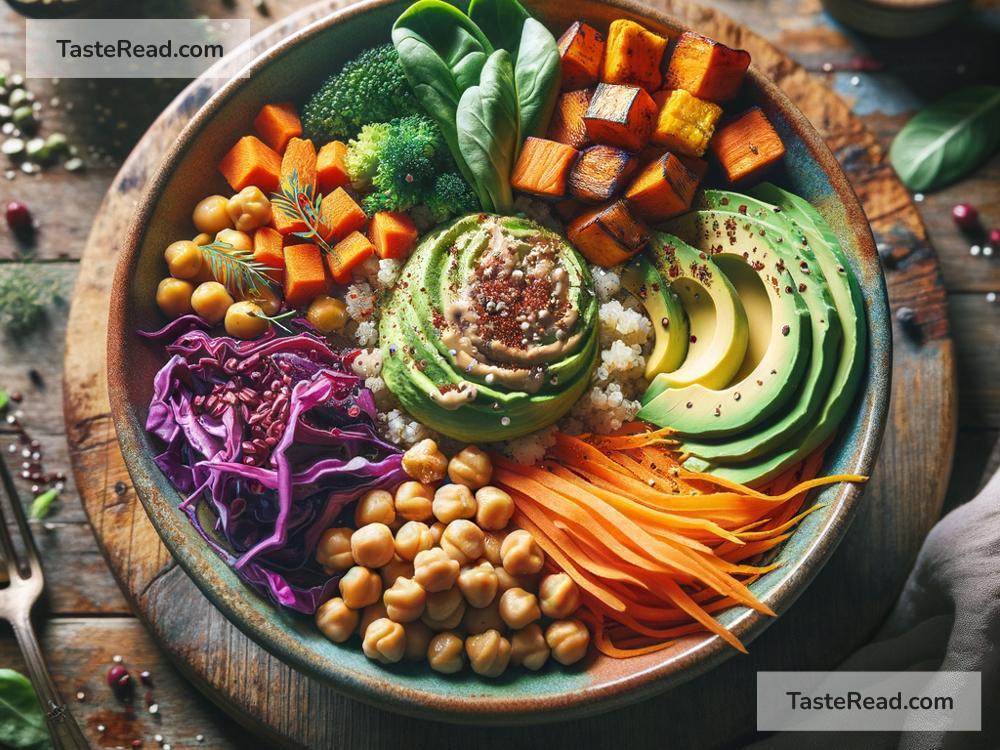The Ultimate Guide to Vegan Buddha Bowl Creations
Buddha bowls are one of the most exciting, delicious, and visually beautiful meals you can make. They are colorful, nutritious, and highly customizable, making them a perfect choice for anyone who loves healthy eating — especially vegans! Whether you’re new to vegan cooking or simply looking for new ideas, this guide will help you create the ultimate vegan Buddha bowl.
What Is a Buddha Bowl?
A Buddha bowl is a balanced meal served in a single bowl. It usually includes a mix of vegetables, grains, protein, and a flavorful dressing or sauce. It got its name because the bowl often looks full — like the “round belly” of a Buddha statue. These bowls are creative and fun, allowing you to mix different ingredients for a satisfying and nourishing meal.
Whether you enjoy bold flavors, prefer something simple and light, or want to make use of ingredients you already have in your kitchen, Buddha bowls can be tailored just for you.
Key Components of a Vegan Buddha Bowl
To create a well-rounded Buddha bowl, focus on these key components:
1. Grains
Grains are the base of your bowl. They provide energy and make the meal filling. Some popular vegan-friendly grains for Buddha bowls include:
– Quinoa: Packed with protein and fluffy texture.
– Brown rice: Nutty and hearty.
– Farro: Chewy and satisfying.
– Barley, bulgur, or couscous for quick-cooking options.
You can also use gluten-free grains like millet or wild rice if you prefer.
2. Protein
Protein is an essential part of a vegan Buddha bowl. Thankfully, there are plenty of plant-based options:
– Chickpeas: Roasted, seasoned, or straight from the can.
– Tofu: Pan-fried, baked, or marinated.
– Tempeh: A super-nutritious soy product that absorbs flavors well.
– Edamame, lentils, or black beans for variety.
– Seitan: A meaty alternative made from wheat for those who enjoy its texture.
3. Veggies
Veggies bring color, vitamins, minerals, and texture to your Buddha bowl. Try a mix of cooked and raw vegetables for variety:
– Raw options: Spinach, kale, shredded carrots, cucumber, or radishes.
– Roasted veggies: Sweet potatoes, zucchini, broccoli, or Brussels sprouts.
– Steamed vegetables: Cauliflower, asparagus, or green beans.
– Pickled vegetables: Kimchi or pickled onions for a tangy kick.
4. Healthy Fats
Healthy fats add creaminess and flavor while keeping your meal satisfying. Some great options are:
– Avocado slices or cubes.
– A handful of nuts or seeds (like almonds, pumpkin seeds, or sesame seeds).
– Tahini-based dressings.
– Nut butter drizzle (like peanut or almond butter).
5. Flavorful Sauce
A dressing or sauce ties everything together. Consider these vegan favorites:
– Tahini lemon dressing.
– Creamy avocado sauce.
– Peanut or almond butter dressing.
– Miso ginger dressing.
– Soy sauce mixed with fresh lime juice.
Don’t forget to season your ingredients with herbs and spices! Garlic powder, cumin, paprika, fresh parsley, or cilantro can take flavors to the next level.
6. Optional Extras
To add crunch and fun to your Buddha bowl, try:
– Toasted coconut flakes.
– Crumbled tortilla chips.
– Dried cranberries or raisins for a pop of sweetness.
How to Build the Perfect Vegan Buddha Bowl
Follow this step-by-step guide to create your ultimate vegan Buddha bowl:
Step 1: Start with a Base
Choose your grain (or greens if you prefer a salad-style bowl). Cook and season it lightly with salt, pepper, or your favorite spices.
Step 2: Add Protein
Choose one or more protein options and prepare them accordingly. For example, bake tofu cubes or roast chickpeas until crispy.
Step 3: Pile on Veggies
Add a mix of fresh, roasted, and steamed vegetables on top of your base. Think about contrasting colors and textures for a bowl that looks as good as it tastes.
Step 4: Add Healthy Fat
Slice up some avocado or sprinkle nuts and seeds for creamy and crunchy elements.
Step 5: Drizzle with Sauce
Choose a flavor-packed sauce to drizzle over your bowl. Be generous — a good sauce can bring everything together.
Step 6: Garnish
Top with optional extras like fresh herbs, sesame seeds, or crunchy add-ons. A beautiful garnish makes your Buddha bowl Instagram-worthy and delicious!
Tips for Buddha Bowl Success
- Balance Flavors: Combine sweet, salty, tangy, and savory flavors. For example, roasted sweet potatoes pair beautifully with tangy tahini dressing.
- Make It Colorful: Use vegetables like red peppers, purple cabbage, orange carrots, and green spinach to create a rainbow in your bowl.
- Prep Ingredients Ahead: Cook grains, roast veggies, or marinate tofu in advance for quick assembly during busy days.
- Get Creative: Experiment with different combinations of grains, proteins, and sauces until you find your favorites.
Why Buddha Bowls Are Perfect for Vegans
Buddha bowls are an ideal vegan meal because they focus on whole, plant-based ingredients. Each bowl offers a complete balance of nutrients, including protein, fiber, healthy fats, vitamins, and minerals. Plus, they’re entirely customizable, making it easy to try new flavors and seasonal produce.
Final Thoughts
Creating vegan Buddha bowls isn’t just a healthy habit — it’s a fun and creative way to eat! With endless combinations of grains, proteins, vegetables, and sauces, every bowl can be a new experience. Whether you’re meal prepping for the week or making a quick dinner, Buddha bowls are a perfect choice for delicious, wholesome eating. So, grab your favorite ingredients, and start building your ultimate vegan creation today!


